The dramatic conclusion of Dune: Prophecy Episode 4 leaves fans with a whirlwind of revelations, unanswered questions, and compelling mysteries. Set 10,000 years before Denis Villeneuve’s Dune films, this HBO prequel delves into the origins of the Sisterhood, House Harkonnen, and other influential factions within the universe.
While the series draws inspiration from Frank Herbert’s original Dune novels and the expanded works by Brian Herbert and Kevin J. Anderson, it carves its path, delivering a fresh narrative that uncovers secrets the books never fully explored. With its intricate storytelling, Dune: Prophecy continues to captivate fans and expand the rich lore of the Dune universe.
Among the standout moments in Dune: Prophecy Episode 4 is the return of Desmond Hart, played by Travis Fimmel. Absent in Episode 3, Fimmel’s portrayal of the seasoned Arrakis soldier captivated viewers with his mysterious abilities and ambiguous motives.
Following Emperor Javicco Corrino’s ruthless orders, Hart executes several nobles, adding to the episode’s tension. Meanwhile, Tula Harkonnen’s experiment turns dark, inadvertently leading to what seems like Sister Lila’s shocking resurrection.
Adding another layer of intrigue, Sister Theodosia reveals her shapeshifting abilities just as Valya Harkonnen’s desperate attempt to regain Javicco’s favor crumbles. These thrilling developments underscore why Dune: Prophecy continues to captivate American audiences with its compelling blend of suspense and intricate storytelling.
How Did Lila Return in Dune: Prophecy? The Mystery of Her Blue Eyes Explained
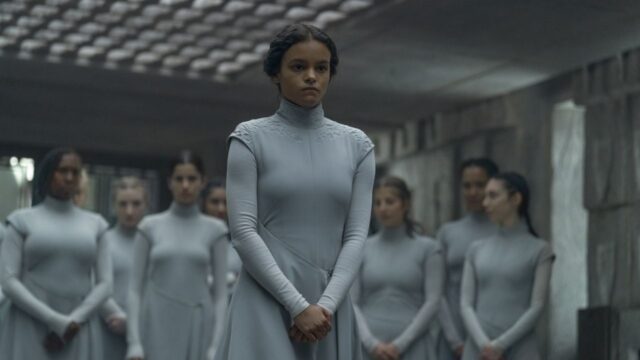
At the end of Dune: Prophecy Episode 3, Tula Harkonnen takes a desperate and risky step to revive Lila by combining the powerful Spice Melange with forbidden Thinking Machine technology. Tula’s actions are driven by her deep bond with Lila, whom she has cared for since childhood, even though she knows Valya Harkonnen would disapprove.
While waiting for results, Tula experiences haunting visions, including where Sister Emeline discovers the secret room and the illegal technology. To protect her secret, Tula is forced to make a heartbreaking decision, killing Emeline to prevent her discovery. This intense storyline highlights the high stakes and moral conflicts that keep American audiences hooked on the Dune: Prophecy series.
Tula is stunned to find Lila awake again, confirming that her haunting visions are not real—at least for now. However, Lila’s return comes with a striking change: her eyes have turned blue from prolonged exposure to the Spice Melange. Upon discovering Mother Superior Racquella’s genetic indexing computer technology, Lila questions Tula about what she is witnessing.
The uncertainty surrounding Lila’s emotions and potential reaction to Sisterhood’s use of forbidden technologies sets the stage for explosive drama. This gripping development adds to the intrigue, keeping American audiences eagerly invested in the unfolding mysteries of Dune: Prophecy.
How Does Theodosia Shapeshift Into Griffin Harkonnen in Dune: Prophecy?
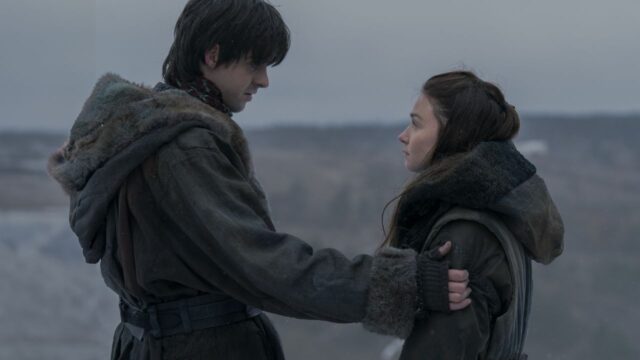
In Dune: Prophecy Episode 4, Sister Theodosia’s mysterious origins finally take center stage, revealing the secret behind her extraordinary abilities. In a jaw-dropping twist, Valya Harkonnen is seen gazing at a painting of her late brother, Griffin Harkonnen, only to encounter him moments later. At first glance, it seems Griffin has miraculously returned, but as he moves, his form shifts, exposing him as Theodosia, a shapeshifter.
This revelation raises questions about whether Theodosia is a Face Dancer, potentially altering the canon since Tleilaxu technology wasn’t believed to be this advanced during this era. This thrilling development has sparked theories among American fans, adding another intrigue to Dune: Prophecy’s expanding lore.
In the expansive lore of Dune, shapeshifters—commonly known as Face Dancers—have a storied history, though it remains uncertain if Sister Theodosia is truly one of them. The series frequently tweaks the portrayal of special abilities, leaving fans questioning her origins.
In Frank Herbert’s novels, Face Dancers were created through the genetic experiments of the Bene Tleilax, or Tleilaxu, a secretive and universally shunned faction. Known as the Tlulaxa during the Butlerian Jihad era, their advanced genetic technology was still in its infancy.
If Theodosia is a Face Dancer, her inclusion could signify a major deviation from the canon. This intriguing twist continues to spark debate among American viewers, adding to the mystery of Dune: Prophecy.
What Do Desmond Hart’s Bleeding Scars Mean in Dune: Prophecy?
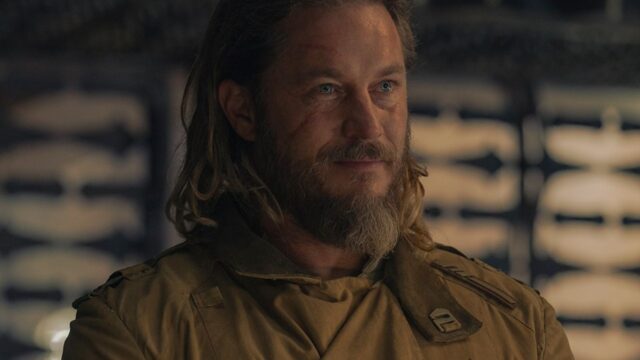
As with most Desmond Hart-related matters, there are still more questions than answers. The repercussions of using his powers cause him to bleed from scars on his back, and in episode 4, he is shown killing other aristocrats who had been accused of using Thinking Machines. Later, a shirtless image of him in his chamber provided a clearer look at the bleeding when he was recuperating.
In Dune: Prophecy, Desmond Hart’s bleeding scars reflect the toll of his unique abilities, likely tied to his experience inside the sandworm. During Episode 4, he deeply respects the sandworm, suggesting a transformative, almost spiritual encounter that may connect him to a higher power. This has led fans to speculate about the significance of Hart’s scars and their relationship to the sandworm’s mysterious influence.
Why Did Emperor Corrino Order Desmond to Execute the Nobles in Dune: Prophecy?
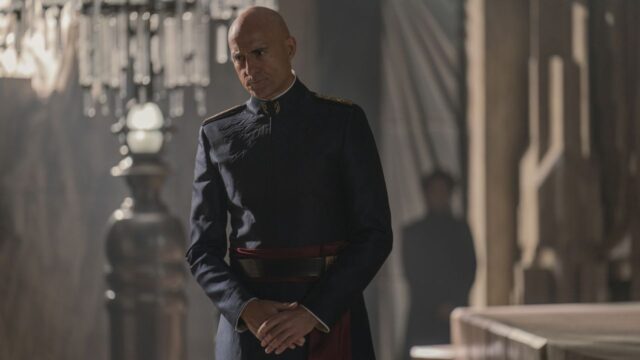
Throughout Dune: Prophecy Season 1, Emperor Javicco Corrino has struggled with indecision, and his frequent inaction has allowed noble houses to challenge his authority. In Episode 2, he showed mercy by sparing Duke Ferdinand Richese despite serious offenses, hoping to bring unity to the empire through peace.
However, Empress Natalya and Desmond Hart have consistently pushed him to take a stronger stance, urging him to use Hart’s mysterious abilities to instill fear and maintain control. In Episode 4, Javicco finally acts decisively, using Desmond Hart’s speech to execute nobles who violated the ban on Thinking Machines.
Mother Superior Racquella’s vision was shown in Dune: Prophecy episode 1, which concluded with a view of dreadful, robotic blue eyes. The Sisters continue to get this exact vision of the frightening eyes in episode 4, which begs the issue of what they are.
This indicates a threat to artificial intelligence or the Thinking Machines, potentially Omnius. Some viewers have connected the eyes to the Arafel prophecy by speculating that they are the eyes of Leto II Atreides, the God Emperor, looking at them from the far future.
What Does Valya Harkonnen Want in Dune: Prophecy?
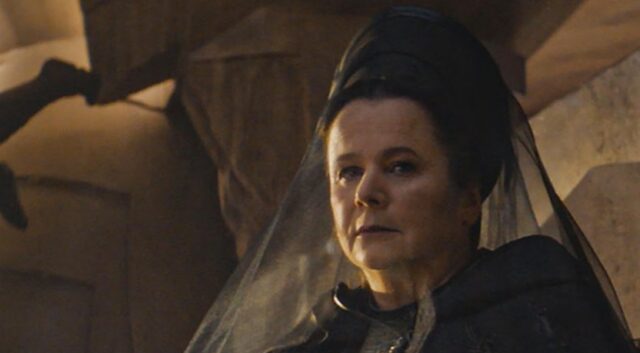
Valya’s dramatic return to House Harkonnen offers her nephew, Harrow, a chance to restore their tarnished family name, which has suffered since Vorian Atreides labeled their ancestor a coward after the Battle of Corrin.
To regain political standing, the Harkonnens have turned to the lucrative whale fur trade from Lankiveil. Valya’s strategic moves to rebuild their influence are central to the narrative in Dune: Prophecy, capturing U.S. audiences as they watch this powerful family navigate their complex history.
Valya seeks to exploit her family to regain the emperor’s trust, showing her true allegiance to her goals. She helps them get promoted to the council, but Desmond Hart’s interference causes the plan to fail. In Dune: Prophecy, Valya will likely continue supporting her nephew in a mutually beneficial arrangement that aids the Harkonnens in escaping their past, despite her supposed severance of family ties upon joining the Sisterhood.
About Dune: Prophecy
Dune: Prophecy is an American science fiction television series set in the Dune universe created by Frank Herbert, for the streaming service Max. Focusing on the origins of the Bene Gesserit, an exclusive and powerful sisterhood who undergo intense physical training and mental conditioning to obtain superhuman abilities, it takes place approximately 10,000 years before the events of Herbert’s novel Dune (1965) and serves as a prequel to Denis Villeneuve’s Dune (2021). The series is produced by Legendary Television, with Alison Schapker serving as showrunner, writer, and executive producer.
During Legendary Entertainment’s 2016 acquisition of television and film rights for the Dune franchise, they began development of a two-part film adaptation with Villeneuve serving as director by 2017. Legendary Television ordered the series in 2019, being a spin-off project from Villeneuve’s films.
Plot: Set 10,000 years before the events of Dune, the series “follows sisters Valya and Tula Harkonnen as they combat forces that threaten the future of humanity, and establish the fabled sect known as the Bene Gesserit.”

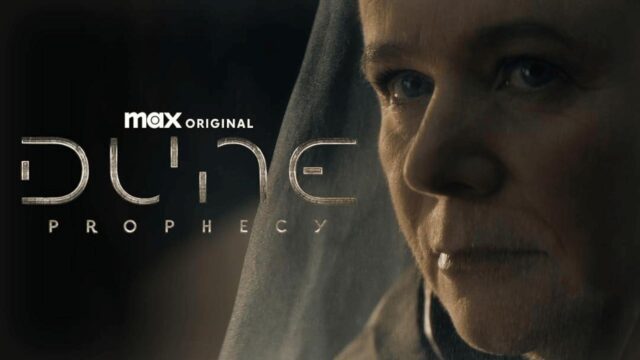
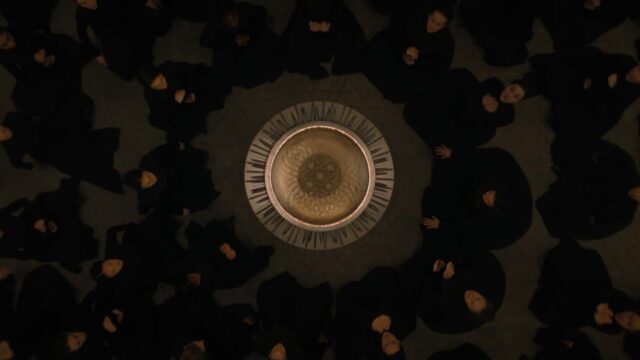
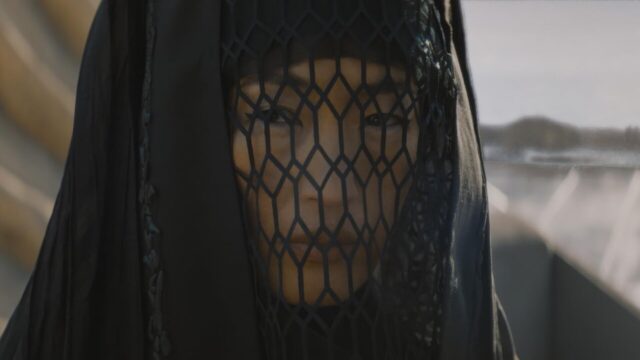
No Comments on Dune: Prophecy Episode 4 Ending Explained – Is Lila Still Alive? Plot Twists and Theories